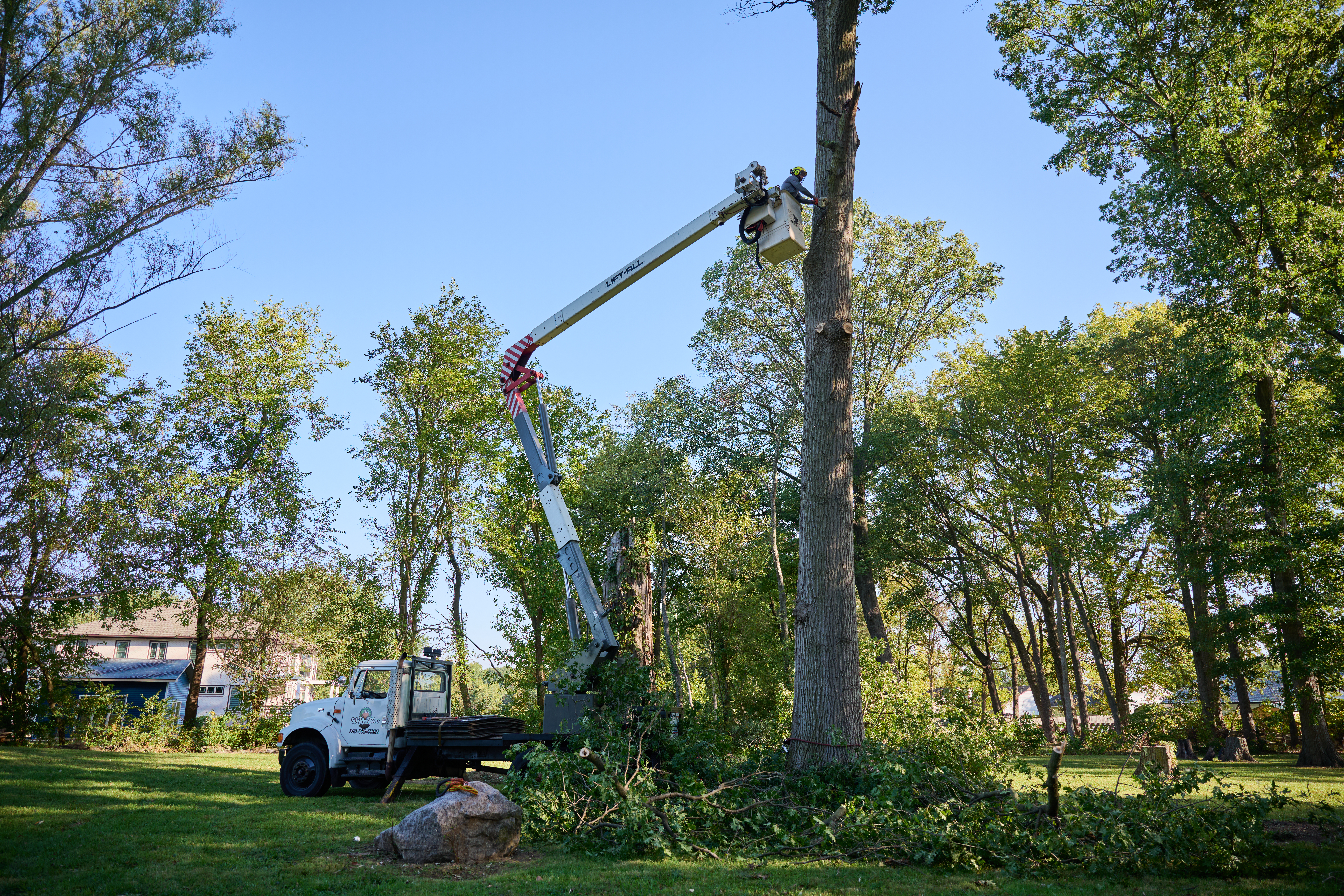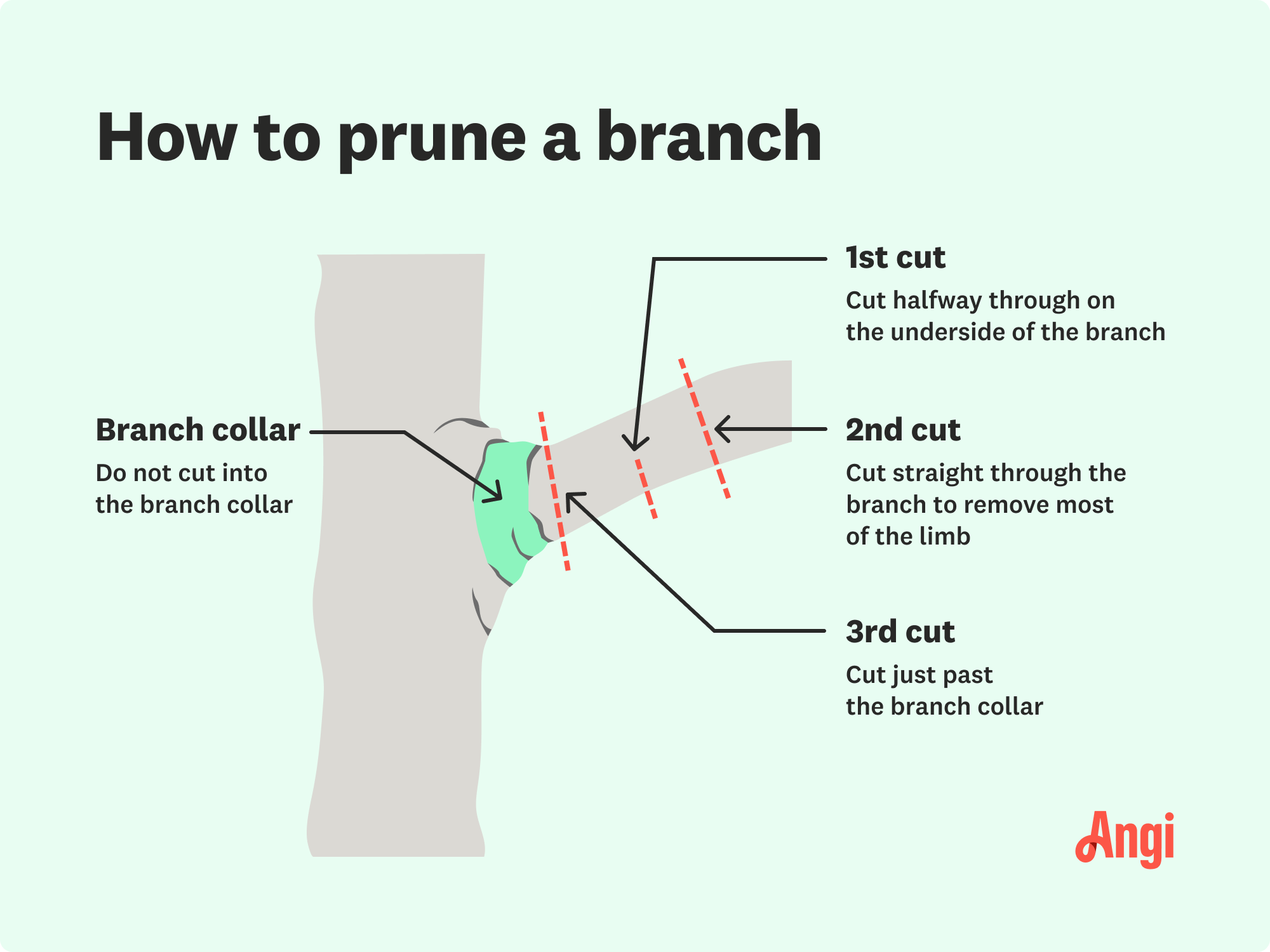
The most significant factor in tree removal costs is the amount of debris. Read on to learn more about the average tree debris removal costs.
Trees tend to heal better on their own


Pruning sealers is a product marketed to aid in helping trees heal after cutting a branch.
In most cases, it’s best to allow trees to heal naturally without additional products.
Hiring a professional tree trimmer can reduce the risk of damaging your tree.
Trimming a tree properly is essential to its health, and if done incorrectly can damage or even kill it. You may have heard of pruning sealers and wonder what to put on a tree after cutting one of its branches to aid in the healing process. But is that the best option for your tree's health?
Let’s review what to put on a tree after cutting a branch, when products are helpful, and when to consult a local tree trimming professional.

While there are products available for post-branch trimming aid, most of the time, it's best to allow the tree to heal naturally without applying a tree wound dressing. Pruning sealer, also known as pruning paint, is a product marketed to help protect tree wounds from disease and pests after cutting a branch. However, many products are made with petroleum-based ingredients and even contain tar or asphalt.
This chemical make-up can cause more harm to the recovering tree. In many cases, the sealer can make it more difficult for the tree to recover naturally, trap moisture in the tree, and cause it to decay. There are some sealers that contain more natural ingredients, such as aloe gel and collagen. So, you should research the products and consider whether you should use a sealer or leave the tree alone.
In extreme instances, some people choose to apply a pruning sealer to old or unhealthy trees, especially during high-risk disease season. However, by implementing proper pruning techniques and cutting branches at the right time of year, you can reduce the risk of damaging the tree and skip using a sealer. Consult a local tree trimming professional to decide whether it’s in your tree’s best interest to apply a prune sealer.

Trees are very resilient and have an amazing ability to heal themselves naturally. So, there are some ways you can help your tree heal rather than sealing a tree after cutting a branch. Use these methods to keep your tree healthy after a pruning session:
Use proper pruning techniques: When cutting a tree branch, it’s essential to make clean cuts with sharp tools. You also want to cut at the right angle to help direct water flow and prevent rot.
Cut and prune at the right time: Timing is key when cutting a branch and keeping your tree healthy. If it's safe to wait to cut the limb, then prune during the right time to prevent it from being prone to pests and diseases.
Water the tree: It's vital to keep your recently cut tree hydrated to promote healing. You should water it thoroughly, but always be careful not to overwater the tree either.
Apply fertilizer if needed: In some cases, you may want to apply fertilizer to provide the tree with additional nutrients to aid in the healing process. Of course, you should test the soil to see what it may be lacking to ensure you use the correct type and amount.
Hire a professional arborist: If you have already cut your tree and it's showing signs of distress, then you should have a certified arborist help you determine the best way to help heal the tree and prevent the risk of further issues.
Although trees can recover from cutting a branch, it can be prone to diseases and pests if done improperly. Hiring a professional tree trimmer near you to tackle the task can ensure the job is done safely and correctly.
The price to trim a tree will depend on various factors, such as the size of the tree, type, and time of year. However, the average cost of tree trimming is $460, but prices can range between $270 and $1,800. So, if you don’t feel comfortable making branch cuts and want to keep your tree healthy, then you should hire a tree trimming pro to do it for you.
From average costs to expert advice, get all the answers you need to get your job done.

The most significant factor in tree removal costs is the amount of debris. Read on to learn more about the average tree debris removal costs.

The cost to remove palm trees depends on several factors, including their size, location, and more. Our guide shows the average palm tree removal costs.

Trimming your bushes is one of the less costly aspects of landscaping, and it’s helpful to bundle many trimming services together to save money.

How much does an arborist cost? This guide explains the cost of different services, ongoing expenses, and other factors to consider when hiring an arborist.

Removing a small tree can free up yard space and prevent future damage to your property. Learn how to remove a small tree while staying safe.

If your tree is still giving you grief after you remove it, knowing how to stop tree roots from growing back can ease your mind and keep your home safe.